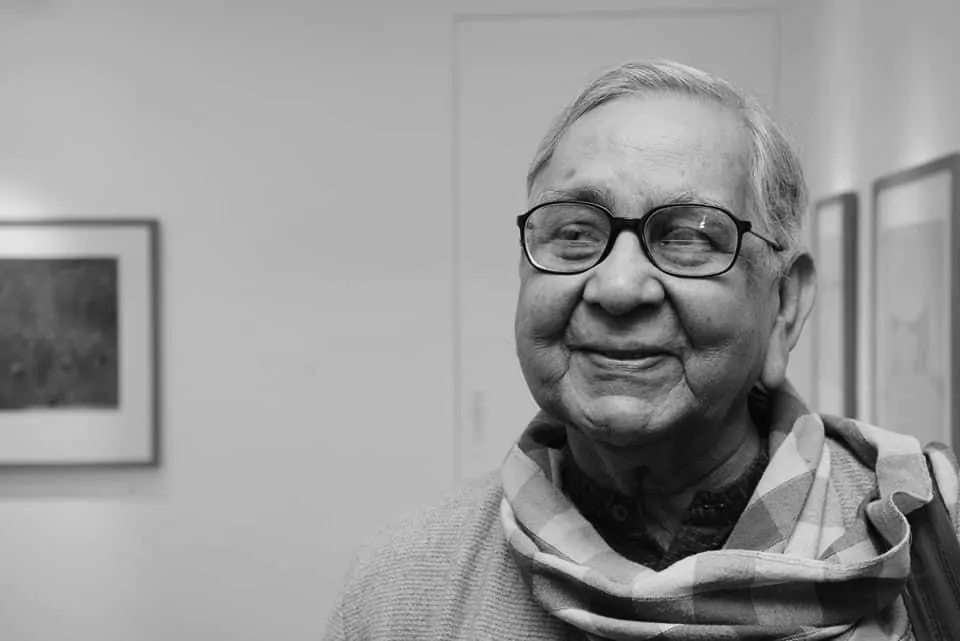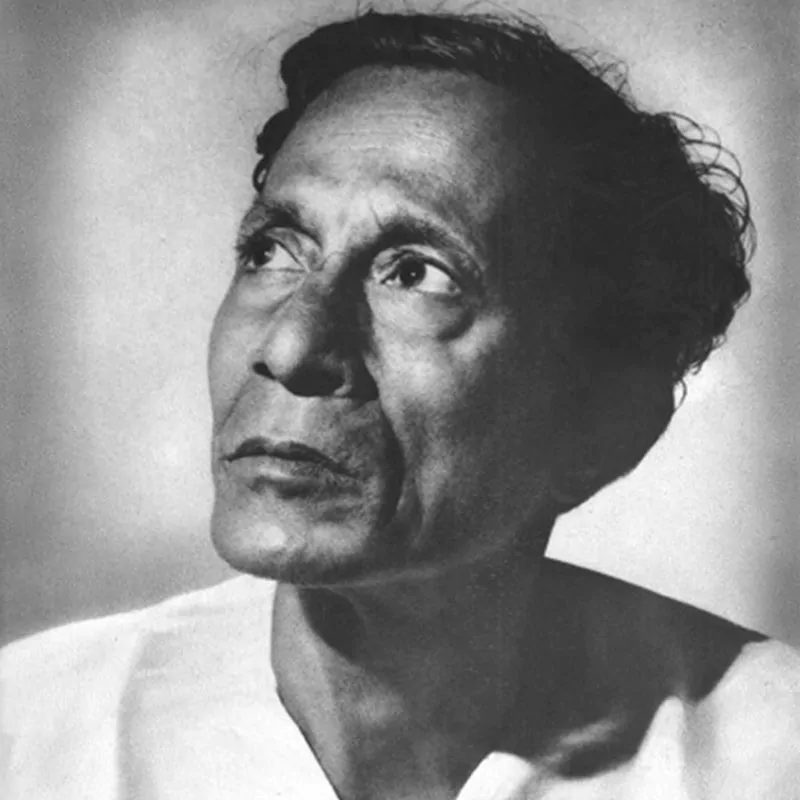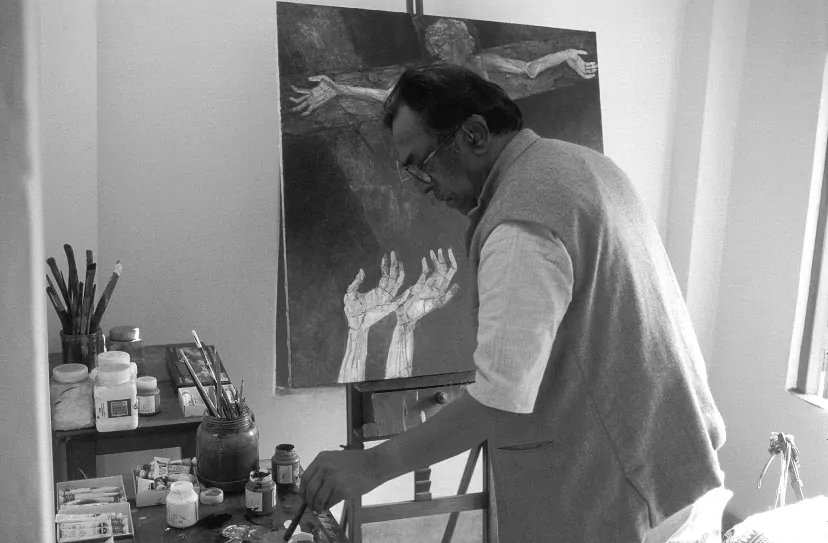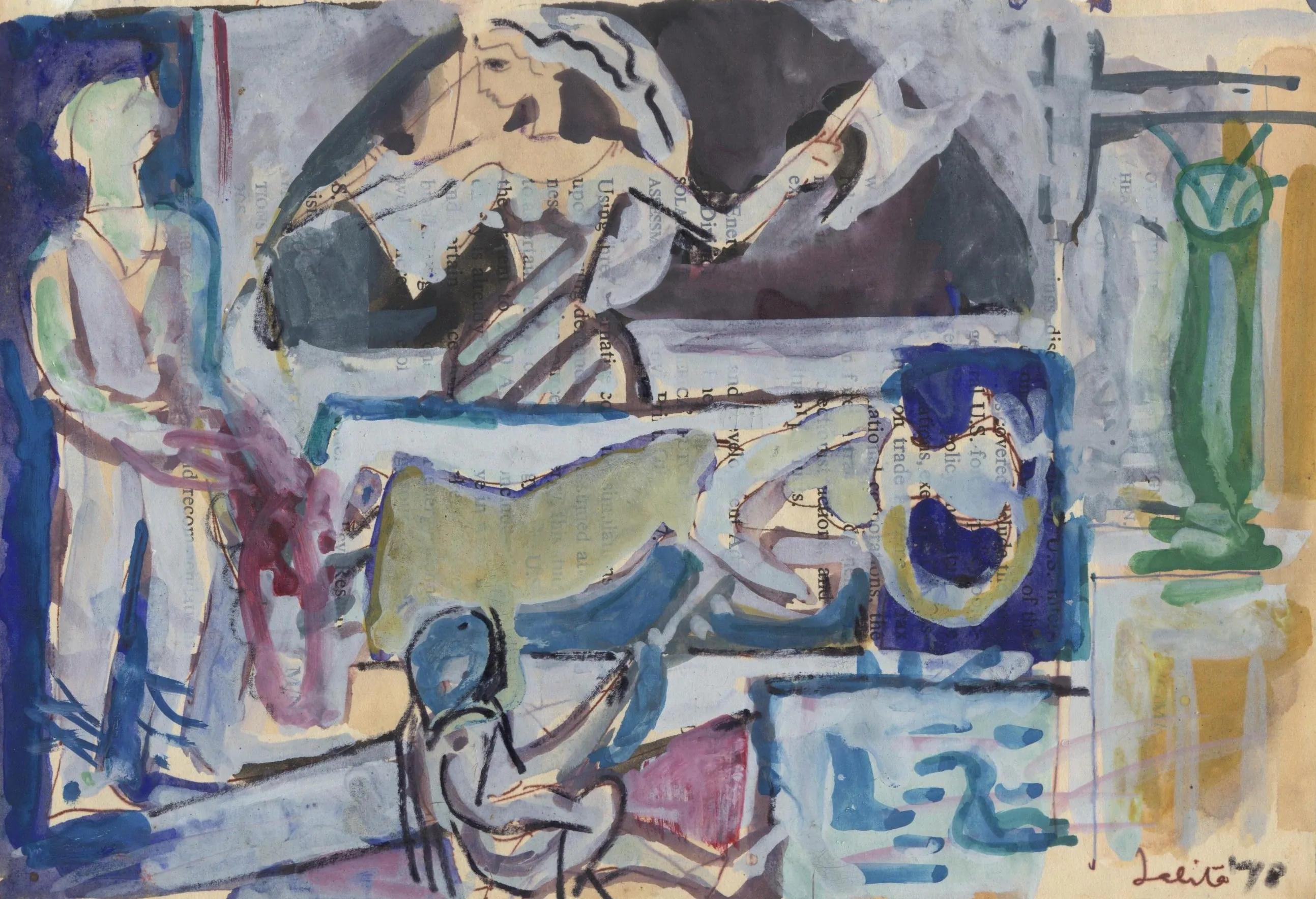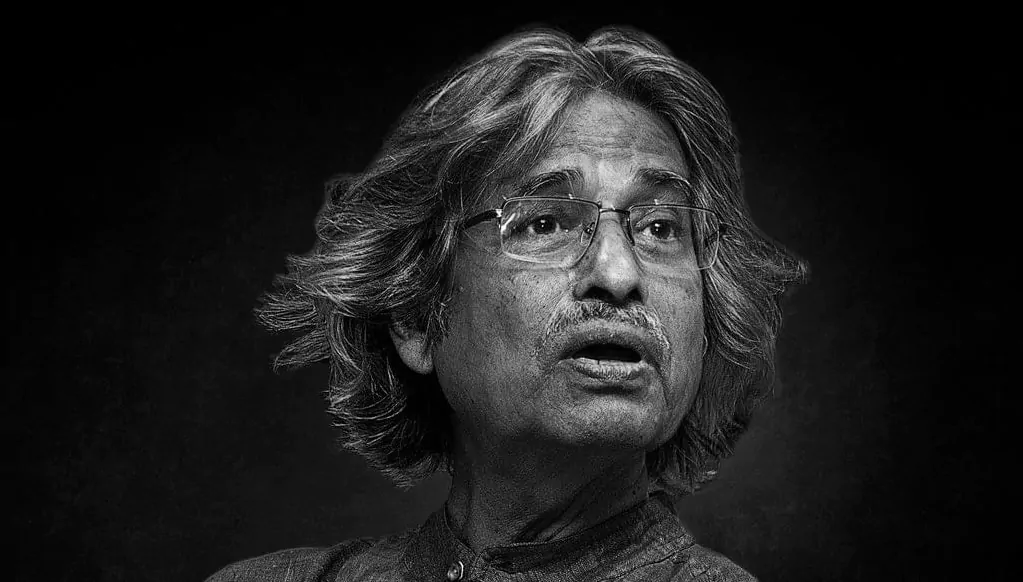The Calcutta Group: Makers of Modern Indian Art.
Many hold the opinion that modernism in Indian art started with the works of the artists of the Bombay ‘Progressive Artists Group’. There is a raging controversy regarding this & it is high time we strongly refute this opinion. The ‘Calcutta Group’ was formed four years before the ‘Progressive Artists Group’. The artists of this group had followed from very close quarters the growth of nationalism in the country. They also observed the adverse effects of colonialism of national realism. The reactions this realism generated in them have been sought to be articulated in the language of art by these artists in their works. This search started long before the Bombay group was formed. From this angle there can possibly be no doubt that the artists of the ‘Calcutta Group’ were the chief pioneers of modernity in Indian art. Following the formation of the ‘Calcutta Group’ in 1943, a tendency to get organised in groups emerged among artists in different pockets if India. In 1944 the ‘Progressive Painters Association’ was formed under the guidance of K.C.S.Paniker in Madras, the ‘Progressive Artists Group’ came into being in Bombay in 1947, ‘Delhi Shilpi Chakra’ was established in 1949. So without doubt the ‘Calcutta Group’ was the pioneer of these efforts. But in recent evaluations many do not like to accord it it’s due honour & position. The founding members of the group in 1943 were Nirode Mazumdar,Gopal Ghosh,Kamala Dasgupta,Prodosh Dasgupta & Paritosh Sen. Later, Abani Sen,Rathin Mitra,Gobardhan Ash, Sunil Madhav Sen & Hemanta Mishra joined the group. Though Ramkinkar Baij participated in their group exhibitions, he formally never joined the group. The first show of the group took place at the Services Arts Club, 28 Chowringhee Road in March 1945 between 8th & 18th March. In it participated seven artists namely: Nirode Mazumdar,Prodosh Dasgupta,Kamala Dasgupta, Gopal Ghosh,Prankrishna Pal & Paritosh Sen. In the Amrita Bazaar Patrika, dated 27th March 1945, it was written in a critical commentary about the exhibition that: ” A group of seven artists of this city have branded themselves under the label ‘Calcutta Group’, a happy echo of the unhappy ‘London Group’. The Calcutta Group like its London prototype claims to be held together by a common creed to abjure academical ‘conventions’ Indian or European, though adhering to Indian Traditions. The quote reveals the outlines of the idealistic basis of the group. A critic of ‘The Statesman’ wrote: “The source from which the Calcutta Group,who I expect would issue a manifesto of their artistic preferences derives its inspiration from Gauguin,Modigliani & Matisse. In January 1949 the fourth Annual Exhibition of the group took place in Artistry House at 15 Park Street which was heavily praised by the press & critics. The foremost purpose of the group was to render Western modernism with the Indian situation. Establishing itself in 1943 when Bengal was oppressed by famine & pestilence & when the whole Eastern & Western world seemed to be abandoned by the gods, these painters assembled themselves in order to demonstrate that MAN was still alive & was to dominate the Fine Arts which had flourished already in spite of social disruption. By the end of the 40’s most of the artists settled in Paris as it was still the Mecca of the art world. Nirode Mazumdar was the first Indian artist to be awarded a French Government Scholarship, in 1937 Prodosh Dasgupta went to the Royal Academy to learn sculpture & soon painters like Paritosh Sen, S.H.Raza,Ram Kumar, Shanu Lahiri, Sankho Chowdhury,Haimati Sen, Anjolie Ela Menon & Akbar Padamsee followed. Thus without any doubt it can be easily said that the ‘Calcutta Group’ served as one of the first groups of modern art in India & Asia. With the combined effort of these painters an organised art movement developed which paved the way for modernism in Indian Art. Vinayak Pasricha.








